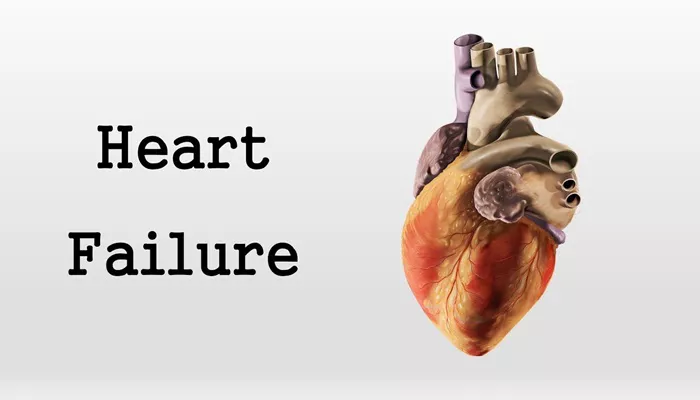Heart failure is a complex and progressive condition that affects millions of people worldwide. It occurs when the heart is unable to pump blood effectively, leading to a buildup of fluid in the lungs and other parts of the body. While heart failure can be broadly categorized into two main types – heart failure with reduced ejection fraction (HFrEF) and heart failure with preserved ejection fraction (HFpEF) – there are also distinct clinical profiles that help classify the severity and presentation of the condition.
Two of these profiles are cold-wet heart failure and cold-dry heart failure. While both are characterized by inadequate tissue perfusion (the “cold” aspect), they differ in the presence or absence of congestion (the “wet” or “dry” aspect). Understanding the differences between these two profiles is crucial for healthcare providers to tailor treatment strategies and improve patient outcomes.
Cold-Wet Heart Failure
Cold-wet heart failure is characterized by inadequate tissue perfusion and the presence of congestion. Patients with this profile often present with symptoms such as shortness of breath, fatigue, and swelling in the legs and feet. The congestion can be seen in various forms, including pulmonary edema, peripheral edema, and jugular venous distension.
In cold-wet heart failure, the heart’s inability to pump blood effectively leads to a buildup of fluid in the lungs and other parts of the body. This can be due to various factors, such as underlying heart disease, valvular abnormalities, or a recent acute event like a heart attack.
Patients with cold-wet heart failure are at a higher risk of adverse outcomes, including prolonged hospitalization, in-hospital mortality, and increased long-term mortality compared to other heart failure profiles. They often require more intensive treatment, such as intravenous diuretics, vasodilators, and potentially inotropic agents to improve tissue perfusion.
SEE ALSO: Which Is A Key Diagnostic Indicator of Heart Failure?
Cold-Dry Heart Failure
Cold-dry heart failure is a less common presentation of heart failure, characterized by inadequate tissue perfusion without significant congestion. Patients with this profile may have symptoms of hypoperfusion, such as confusion, dizziness, and decreased urine output, but may not necessarily have signs of fluid overload.
The underlying cause of cold-dry heart failure can be complex and may involve factors such as hypovolemia, severe valvular disease, or right ventricular dysfunction. In some cases, cold-dry heart failure can be a precursor to cardiogenic shock, a life-threatening condition where the heart is unable to pump enough blood to meet the body’s needs.
Patients with cold-dry heart failure are also at an increased risk of adverse outcomes compared to other heart failure profiles, with higher rates of in-hospital mortality and long-term mortality. They may require specific interventions to improve tissue perfusion, such as fluid resuscitation, inotropic agents, or even mechanical circulatory support in severe cases.
Diagnosis And Management
The diagnosis of cold-wet and cold-dry heart failure relies on a combination of clinical assessment, laboratory tests, and imaging studies. Healthcare providers will typically evaluate the patient’s symptoms, perform a physical examination, and order tests such as an electrocardiogram (ECG), echocardiogram, and blood tests to assess cardiac function and rule out other conditions.
The management of cold-wet and cold-dry heart failure involves a multifaceted approach aimed at improving symptoms, reducing the risk of complications, and prolonging survival. Treatment strategies may include:
Medications: Diuretics, vasodilators, and inotropic agents are commonly used to manage fluid overload and improve tissue perfusion.
Device therapy: Implantable devices such as pacemakers, implantable cardioverter-defibrillators (ICDs), and cardiac resynchronization therapy (CRT) devices may be recommended for certain patients to improve heart function and reduce the risk of sudden cardiac death.
Lifestyle modifications: Patients are often advised to adopt a heart-healthy lifestyle, including regular exercise, a balanced diet, and avoiding triggers such as excessive alcohol or sodium intake.
Surgical interventions: In some cases, surgical procedures such as valve repair or replacement, coronary artery bypass grafting, or heart transplantation may be necessary to address the underlying cause of heart failure.
Prognosis And Outcomes
The prognosis for patients with cold-wet and cold-dry heart failure depends on various factors, including the underlying cause of the condition, the severity of symptoms, and the presence of comorbidities. In general, patients with cold-wet heart failure have a higher risk of adverse outcomes compared to those with warm-wet heart failure, while patients with cold-dry heart failure have the poorest prognosis.
Studies have shown that patients with cold-wet and cold-dry heart failure have higher rates of in-hospital mortality, prolonged hospitalization, and increased long-term mortality compared to other heart failure profiles. They are also more likely to require admission to intensive care units and have a higher risk of developing complications such as acute kidney injury and respiratory failure.
Conclusion
Cold-wet and cold-dry heart failure are two distinct clinical profiles that highlight the importance of assessing tissue perfusion and congestion in patients with heart failure. While both are characterized by inadequate tissue perfusion, they differ in the presence or absence of congestion, which has important implications for treatment strategies and prognosis.
By understanding the differences between these profiles, healthcare providers can tailor treatment approaches to individual patients, optimize outcomes, and improve quality of life. Regular monitoring, adherence to evidence-based guidelines, and close collaboration between patients, caregivers, and healthcare providers are essential for managing these complex conditions effectively.
As research continues to advance our understanding of heart failure, it is our hope that new therapies and interventions will emerge to further improve outcomes for patients with cold-wet and cold-dry heart failure.


